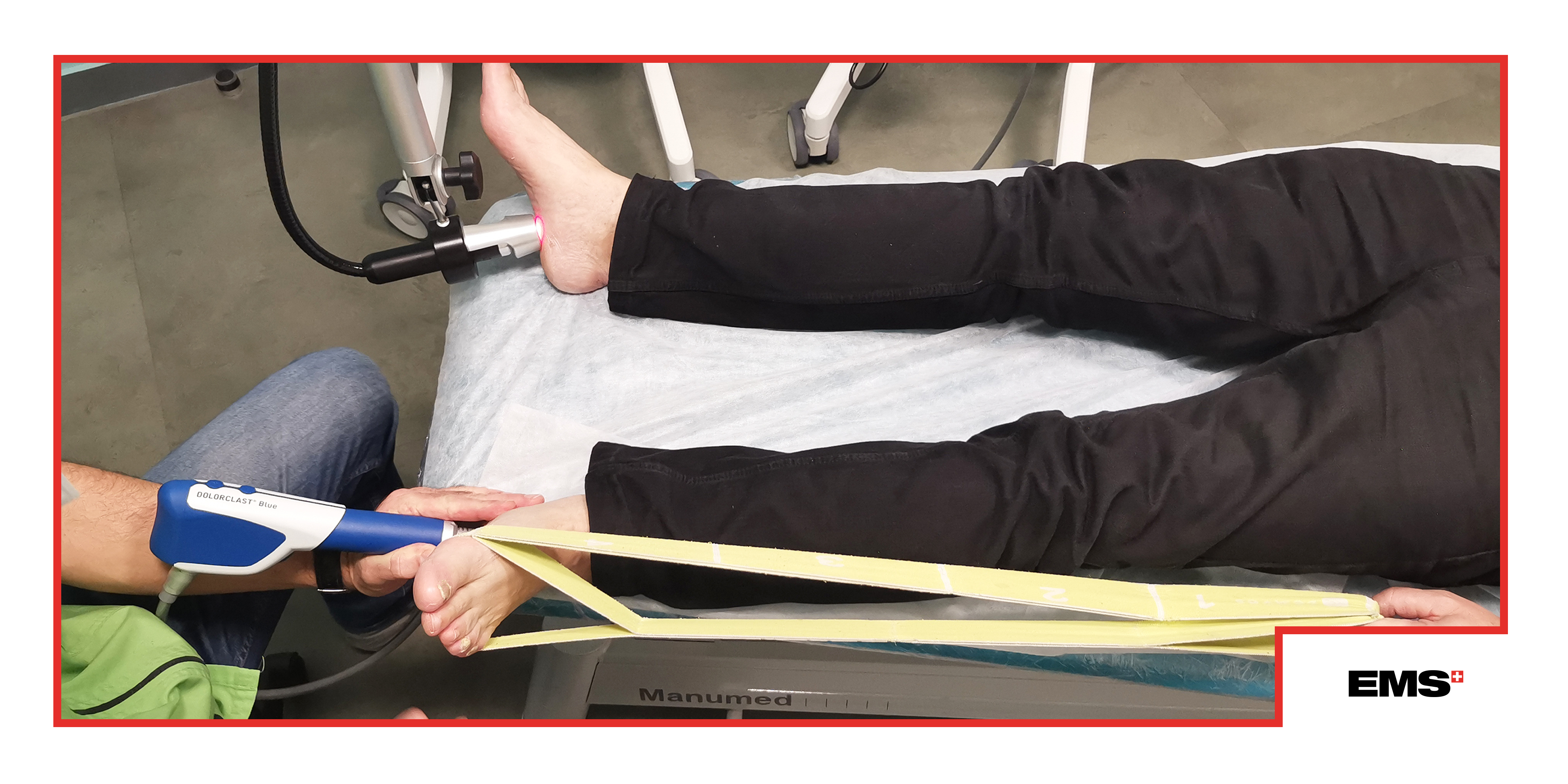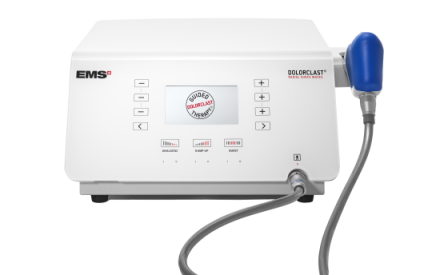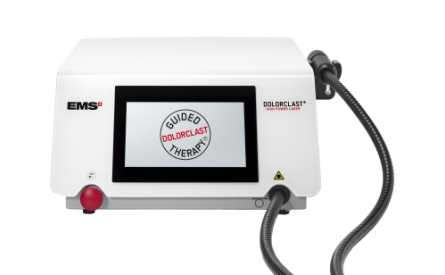
Guided DolorClast® Therapy - Effective treatment solution for plantar fasciitis
GDT for plantar fasciitis
The Guided DolorClast® Therapy (GDT) is a new concept of treatment based on the combination therapies, for practitioners who want to successfully, quickly, and safely treat 90% of their patients with musculoskeletal (MSK) disorders.
Learn more about GDT
Plantar fasciitis is one of the main indications of the Guided DolorClast® Therapy. Click here to find out more about the pathology itself and the GDT application for this specific condition.
Let’s take a closer look at a great example of the use of the Guided DolorClast® Therapy for plantar fasciitis in daily practice.

Guided DolorClast® Therapy - 6 steps, 1 goal: to help patients live a pain-free life.
Step 1: Assess and Motivate
Performing a complete medical history followed by a complete passive and active functional assessment of the patient is an essential step for the treatment success. In this case, Matthieu Cambier examined a 62-year-old retired man who complained of bilateral pain in his heels. It had been present for 4 years, reaching various intensities, from mild to severe. It has therefore been correctly identified as chronic. It was assessed as 7 out of 10 on the pain Visual Analogue Scale (VAS). The patient also explained that his right heel was more painful, although the left one “followed the same path”. The pain usually appeared in the morning and worsened when walking and standing. The patient had been using orthopaedic insoles for two years, bringing some improvement. Besides, the patient was undergoing painful treatment for colon cancer.
Matthieu Cambier diagnosed his patient with bilateral plantar fasciitis after taking into account the medical history and physical examination.
The practitioner decided to use a combined treatment with DolorClast® High Power Laser and DolorClast® Radial Shock Waves, after fully informing the patient of the proposed course of treatment. He discussed in detail all the doubts about shock wave therapy because the patient was a little worried: he had heard that it could be painful.
Step 2: DolorClast® High Power Laser
The physiotherapist Matthieu Cambier has been using a high-power laser for 7 years in his daily practice. As he stated in his commentary on the case: ’I suggested using the laser in the first session as a pretreatment before applying the radial shock waves. However, I only combined these techniques on the right side, which was more painful.’ Despite his initial worries, the patient agreed to test the double treatment on one side only; it allowed him to compare the results with and without using the DolorClast® High Power Laser beforehand.
During each session, a 3-minute high-power laser protocol was administered to the painful area – the anterointernal edge of the heel. It should be noted that no treatment with analgesic drugs was required during the therapy.
Download our e-book and discover the potential of the DolorClast® High Power Laser!
Step 3: DolorClast® Radial Shock Waves
Guided by his 11 years of experience in shock wave therapy, the practitioner concluded that the application of radial shock waves would be more beneficial for the patient. The whole treatment required 6 weekly sessions. The parameters were as follows:
- right heel: DolorClast® High Power Laser 3 min - 5 min pause – RSWT® 2500 pulses on the painful surface, frequency 20 Hz, air pressure 2.5/3 bars (burst mode)
- left heel: RSWT® 2500 pulses on the painful surface, frequency 20 Hz, air pressure 2.5/3 bars (burst mode).
The patient stated that he felt more comfortable when the radial shock waves were applied to the pretreated side with the DolorClast® High Power Laser. It confirms the value of the combined approach of the Guided DolorClast® Therapy.
Download our e-book and discover the potential of the DolorClast® Radial Shock Waves!
Step 4: DolorClast® Focused Shock Waves
In this particular case, after assessing the patient’s condition, the practitioner decided to use radial shock waves (DolorClast® Radial Shock Waves) rather than focused shock waves.
Step 5: Rehabilitate
The personalisation of the programme is an essential step for successful treatment. In the case of Matthieu Cambier’s patient, it involves the feet stretching (in dorsiflexion), using an elastic band, and self-massage of the feet (soles and calves) with a tennis/golf ball. Fortunately, the patient was very attentive and the rehabilitation exercises did not pose any particular difficulties. In addition, the practitioner applied Kinesiology tapes after each session. The kinesio taping can significantly improve treatment effectiveness.
It should be noted that any rehabilitation programme is effective only if it is carried out systematically. In fact, the effectiveness of the program depends largely on the patient’s daily performance at home. It’s up to the therapist to explain the importance of regular individual work to maintain the effects of the weekly sessions.
Step 6: Provide a Follow-up
A reassessment is performed at the start of each session; a significant improvement was noted at the beginning of the 3rd session. The patient was able to resume his daily activities without difficulty as early as the 6th week of treatment.
The application of the DolorClast® High Power Laser significantly improved patient comfort during the sessions. With the specially selected wavelength, the DolorClast® High Power Laser provided a fast and powerful analgesic effect without the need for conventional painkillers. Therefore, it was easier to deliver the power needed for an effective treatment. The introduction of the GTD protocol has undoubtedly improved the patient’s healing process.
The Takeaway Message to Enhance Your Practice
Plantar fasciitis is a common condition that you may encounter in your daily practice. The Guided DolorClast® Therapy is an excellent treatment guide that allows you to improve the patient experience and promote healing. The combined use of advanced technologies: Three minutes of DolorClast® High Power Laser, 5 min pause, 2,500 pulses of DolorClast® Radial Shock Waves, combined with proper assessment, motivation, rehabilitation, and follow-up, help your patients to get back on their feet!


